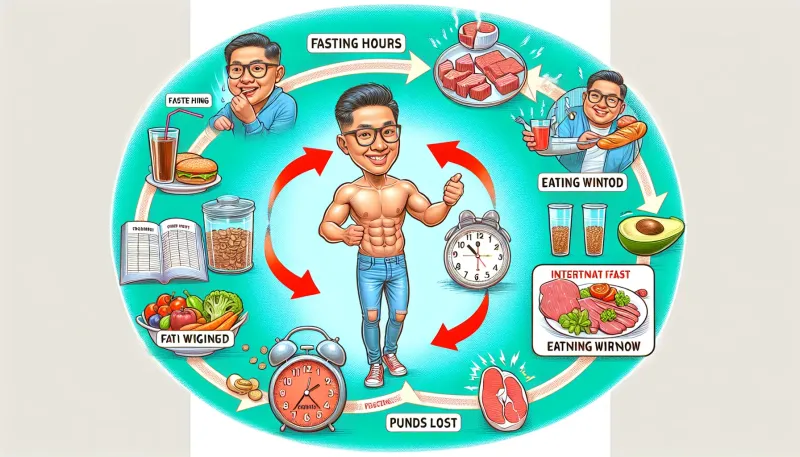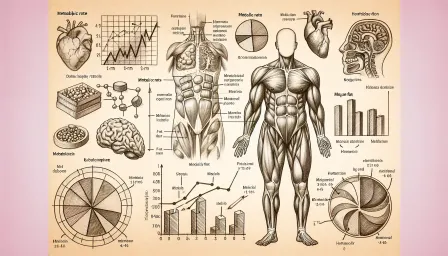Intermittent Fasting for Fat Loss: How to Shed Pounds Effectively

Discover how intermittent fasting can help you effectively shed pounds and achieve your weight loss goals. Learn the benefits, methods, and tips for success.
Intermittent fasting has garnered significant attention as a powerful strategy for fat loss. By strategically timing your meals, you can tap into your body's natural rhythms to optimize fat burning and improve overall health. This article delves into the science of intermittent fasting for fat loss, explains different fasting methods, and offers practical tips for success.
Understanding Intermittent Fasting
Intermittent fasting (IF) is not a diet but an eating pattern that alternates between periods of eating and fasting. It focuses on when you eat rather than what you eat. This approach can help reduce calorie intake, improve metabolic health, and promote fat loss.
How Intermittent Fasting Works
During the fasting periods, your body undergoes several changes at the cellular and molecular levels. Key processes include:
- Insulin Levels: Lowering insulin levels helps facilitate fat burning.
- Cellular Repair: Fasting triggers autophagy, a process where cells remove damaged components.
- Hormonal Balance: Fasting increases norepinephrine, boosting metabolism.
Methods of Intermittent Fasting
There are several methods of intermittent fasting, each with unique features and benefits:
16/8 Method
The 16/8 method involves fasting for 16 hours and eating during an 8-hour window. Typically, this means skipping breakfast and eating from noon to 8 PM. It's one of the most popular and sustainable methods.
5:2 Diet
On the 5:2 diet, you eat normally for five days and restrict calorie intake to around 500-600 calories on two non-consecutive days. This method can be easier for those who struggle with daily fasting.
Eat-Stop-Eat
This method involves fasting for a full 24 hours once or twice a week. For example, you might choose to fast from dinner one day until dinner the next day. This method can be challenging but effective for some individuals.
Alternate-Day Fasting
Alternate-day fasting involves fasting every other day. On fasting days, you may eat very little or nothing at all, while on eating days, you follow a regular diet. This method requires significant willpower but can yield impressive results.
Benefits of Intermittent Fasting for Fat Loss
Enhanced Fat Burning
Intermittent fasting helps shift the body's energy source from glucose to fat. During fasting periods, insulin levels drop, and the body begins to utilize stored fat for energy.
Caloric Restriction
By limiting your eating window, intermittent fasting naturally reduces overall calorie intake. This caloric deficit is essential for weight loss and fat reduction.
Improved Metabolic Health
Intermittent fasting can improve various metabolic markers, including insulin sensitivity, blood sugar levels, and cholesterol. A healthier metabolism supports long-term fat loss and overall wellbeing.
Simplicity and Sustainability
Unlike traditional diets that require meticulous tracking and restriction, intermittent fasting focuses on when you eat. This simplicity can make it easier to adhere to and maintain over time.
Potential Challenges and How to Overcome Them
Intermittent fasting isn't without its challenges. Here are some common issues and tips to overcome them:
Hunger and Cravings
Initially, you may experience hunger and cravings during fasting periods. Stay hydrated, consume enough protein and fiber, and keep busy to distract yourself. Over time, your body will adapt.
Social Situations
Social gatherings can be tricky when following an intermittent fasting schedule. Plan ahead and communicate your fasting routine to friends and family. You can also adjust your eating window to accommodate special occasions.
Plateaus
Weight loss plateaus can occur as your body adapts to the new routine. To overcome this, consider varying your fasting schedule or incorporating more physical activity.
Tips for Successful Intermittent Fasting
Stay Hydrated
Drink plenty of water, herbal teas, and black coffee during fasting periods to stay hydrated and support metabolic processes.
Eat Nutrient-Dense Foods
Focus on nutrient-dense, whole foods during eating windows. Incorporate plenty of vegetables, lean proteins, healthy fats, and whole grains to fuel your body.
Listen to Your Body
Pay attention to your body's signals. If you feel overly fatigued or unwell, it may be necessary to adjust your fasting schedule or seek advice from a healthcare professional.
Combine with Exercise
Enhance your results by incorporating regular physical activity. Strength training and cardiovascular exercises can help build lean muscle and increase calorie expenditure.
Conclusion
Intermittent fasting for fat loss offers a practical and effective approach to shedding pounds and improving metabolic health. By understanding the different methods, benefits, and potential challenges, you can tailor your fasting routine to suit your lifestyle and goals. Remember to stay hydrated, focus on nutrient-dense foods, and listen to your body to maximize your results. With consistency and dedication, intermittent fasting can be a valuable tool on your weight loss journey.



























